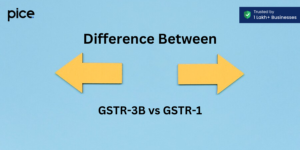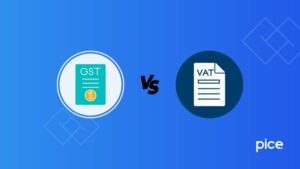Know all About Refrigerator GST Rate & HSN Code in India
- 20 Sep 24
- 11 mins
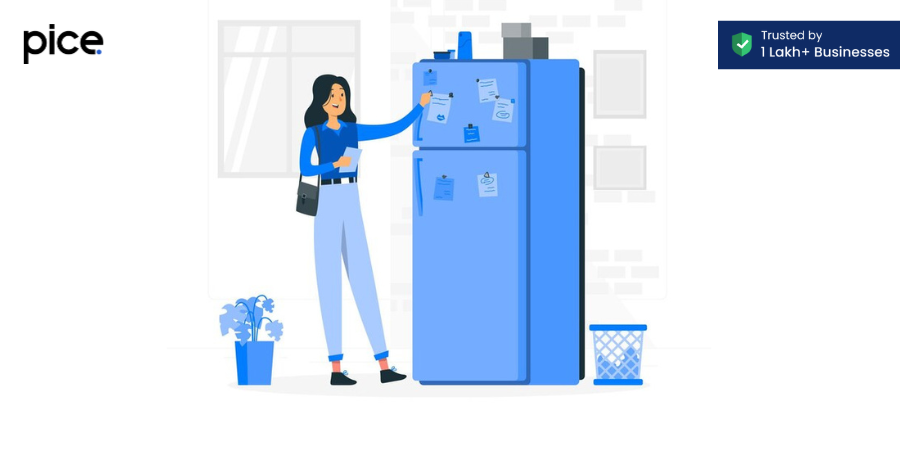
Know all About Refrigerator GST Rate & HSN Code in India
Key Takeaways
- Current GST Rate: The GST rate for refrigerators in India is set at 18%, making it consistent and easy for businesses to manage.
- HS Code for Refrigerators: Refrigerators are classified under HS Code 8418, ensuring standardized identification for trade and tax purposes.
- Claiming Input Tax Credit: Businesses can claim GST on refrigerators as an input tax credit, helping reduce their overall tax liability.
- Simplified Compliance: GST has simplified the tax compliance process for refrigerators, replacing multiple taxes with a single, unified tax system.
- Economic Impact: The introduction of GST has lowered the cost of refrigerators, boosting consumer demand and supporting economic growth through increased market penetration.
The Goods and Services Tax (GST) has revolutionized the Indian taxation landscape, creating a unified tax structure across the nation. This article explains the GST rates and Harmonized System of Nomenclature (HSN) codes, particularly focusing on refrigerators. By understanding these concepts, businesses and consumers can overcome the complexities of GST with ease.
What is GST?
GST stands for Goods and Services Tax. It is a comprehensive, multi-stage, destination-based tax that is levied on every value addition. On July 1, 2017, the central and state governments in India combined to levy a complex system of numerous indirect taxes.

Key Features of GST:
- Comprehensive Tax: GST combines various indirect taxes, such as VAT, service tax, excise duty, and others, into a single tax.
- Multi-Stage Taxation: GST is applied at every stage of the production and distribution chain, from manufacturing to the final sale to consumers.
- Destination-Based Tax: The tax is collected at the point of consumption, meaning the state where the goods or services are consumed gets the revenue.
- Input Tax Credit: Businesses can claim credit for the GST paid on inputs, which helps to reduce the tax burden and avoid the cascading effect of taxes.
Objectives of the GST:
- Eliminate the Cascading Effect: By allowing input tax credits, GST avoids the "tax on tax" situation that was prevalent in the previous system.
- Create a Unified Market: GST creates a single, unified market across India, simplifying the movement of goods and services between states.
- Improve Compliance: With a streamlined and transparent tax system, GST aims to reduce tax evasion and improve compliance.
- Boost the Economy: By simplifying the tax structure and reducing the tax burden, GST aims to boost economic activity and growth.
GST Rates Electronic Items
| Item Description | HSN Code | GST Rate |
|---|---|---|
| Refrigerators | 8418 | 18% |
| Air Conditioners | 8415 | 28% |
| Washing Machines | 8450 | 18% |
| Televisions (up to 32 inches) | 8528 | 18% |
| Televisions (above 32 inches) | 8528 | 28% |
| Microwave Ovens | 8516 | 18% |
| Electric Irons | 8516 | 18% |
| Water Heaters | 8516 | 18% |
| Electric Fans | 8414 | 18% |
| Personal Computers | 8471 | 18% |
| Laptops | 8471 | 18% |
| Printers | 8443 | 18% |
| Mobile Phones | 8517 | 18% |
| Electric Kettles | 8516 | 18% |
| Electric Cookers | 8516 | 18% |
| Air Purifiers | 8421 | 18% |
| Electric Lamps and Light Bulbs | 8539 | 18% |
| Electric Motors and Generators | 8501 | 18% |
| Batteries (including car batteries) | 8507 | 28% |
| Power Banks | 8507 | 18% |
Definition and Classification
- Refrigerators fall under the category of home appliances, and their classification is crucial for determining the correct GST rate.
Specific HSN Codes for Refrigerators
| Item Description | HSN Code | GST Rate |
|---|---|---|
| Combined Refrigerator Freezer | 8418 | 18% |
| Freezers and other refrigerating or freezing equipment | 8418 | 18% |
| Other refrigerating or freezing equipment | 8418 | 18% |
| Heat pumps | 8418 | 18% |
| Parts thereof (excluding air conditioning machines of heading 8415) | 8418 | 18% |
Impact of GST on the Electronics Industry
The introduction of the Goods and Services Tax (GST) has had an extensive impact on the domestic appliances & electronics industry in India. Here’s a detailed look at the various aspects:
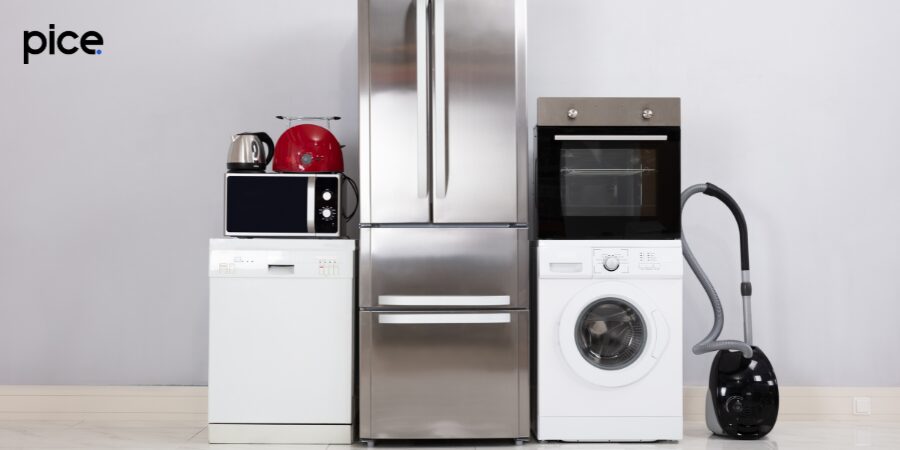
- Tax Structure Rationalization
Before GST, the electronics industry was subject to multiple indirect taxes, such as VAT, excise duty, service tax, and customs duty. These taxes varied from state to state, leading to a complex and often confusing tax structure. GST has simplified this by consolidating all these taxes into a single tax, making it easier for businesses to manage their tax obligations and reducing the compliance burden.
- Increased Competition
With a uniform applicable tax rate across the country, businesses now compete on a level playing field. This has fostered increased competition in the electronics market. Companies can no longer rely on tax advantages in certain states and must instead focus on improving product quality, innovation, and customer service to gain a competitive edge.
- Cost Implications
GST has a mixed impact on the GST rate for electronic items. While the removal of cascading taxes has reduced the overall tax burden on many products, some high-end electronic equipment has seen an increase in tax rates. For instance, products like air conditioners and large televisions attract a higher GST rate of 28%, while most other electronic items are taxed at 18%.
- Transparency and Compliance
One of the significant advantages of GST is the increased transparency it brings to the taxation process. The digitized system ensures that all transactions are recorded and reported, reducing the scope for tax evasion. This has led to better compliance among businesses and increased tax revenue for the government.
- Input Tax Credit
GST allows businesses to claim input tax credits on the taxes paid for raw materials and other inputs. This reduces the overall cost of production for electronic goods manufacturers and encourages them to pass on the cost savings to consumers in the form of lower prices.
- Streamlined Logistics and Supply Chain
GST has eliminated the need for multiple checkpoints and state border taxes, which previously caused delays and increased logistics costs. The introduction of GST has streamlined the supply chain, reducing transit times and costs. This has benefited both manufacturers and consumers, leading to more efficient distribution and better availability of products.
- Compliance Challenges
Despite its advantages, GST has also introduced new compliance challenges, especially for small and medium-sized enterprises (SMEs). The need to file regular returns and maintain detailed records can be burdensome for smaller businesses with limited resources. However, over time, many businesses have adapted to these requirements, and the overall compliance landscape is improving.
- Market Dynamics and Consumer Behavior
The introduction of GST has influenced consumer behavior and market dynamics. Consumers are now more informed about the tax components of their purchases, leading to increased price sensitivity. This has driven companies to offer more competitive pricing and better value propositions to attract and retain customers.
GST on Refrigerator
Current GST Rate
As of now, the GST rate on refrigerators is 18%. This rate applies uniformly across all types of refrigerators, including single-door, double-door, side-by-side, and other variants.
Previous Tax Rates Before GST Implementation
Before the introduction of GST on July 1, 2017, the taxation on refrigerators involved multiple layers of taxes, which included:
- Excise Duty: This was a central tax levied on the manufacturing of goods. The typical excise duty on refrigerators was around 12.5%.
- Value Added Tax (VAT): This was a state-level tax applied on the sale of goods. The VAT rate varied by state but was generally in the range of 12.5% to 15%.
- Central Sales Tax (CST): This was applicable on interstate sales and varied, usually around 2%.
- Additional Cesses: Some states also levied additional cess rates and surcharges on top of VAT.
Combined Effective Tax Rate Before GST
When combining these various taxes, the effective tax rate on refrigerators before GST ranged from approximately 26% to 30%. This included the cascading effect of taxes, where tax was charged on the value, inclusive of previous taxes.
Comparison: Pre-GST vs. Post-GST
- Pre-GST Effective Tax Rate: 26% to 30%
- Post-GST Rate: 18%
Impact of GST Introduction
- Reduction in Tax Rate: The introduction of GST brought the tax rate down to 18%, significantly lowering the overall tax burden on refrigerators.
- Simplified Taxation: GST replaced multiple taxes with a single tax, simplifying the tax structure.
- Elimination of Cascading Taxes: By allowing input tax credits, GST eliminated the cascading effect of taxes, where tax was levied on tax.
Historical Changes in GST Rate
Since the implementation of GST, the rate on refrigerators has remained stable at 18%. There have been discussions and reviews about adjusting GST rates for various goods, but the rate for refrigerators has not seen significant changes since its inception.
Benefits of GST on Refrigerators
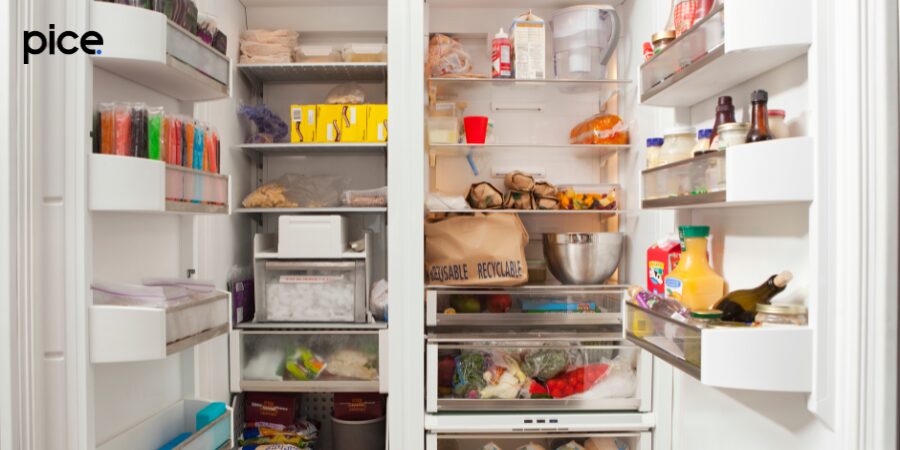
- Simplified Taxation
The implementation of GST has significantly simplified the taxation process for refrigerators. Before GST, the tax structure was complex, involving multiple indirect taxes such as VAT, excise duty, and central sales tax, which varied across states. GST consolidated these into a single tax, making it easier for businesses to manage their tax liabilities. This simplification reduces administrative burdens and enhances compliance, leading to a more streamlined business operation.
- Price Reduction
The rationalization of the tax structure under GST has led to a reduction in the overall cost of refrigerators. Previously, the combined tax burden from multiple taxes could range from 26% to 30%. With GST, the tax rate on refrigerators was set at 18%, significantly lowering the overall tax burden. This reduction has benefited consumers with lower prices, making refrigerators more affordable and increasing their market penetration.
Challenges Faced by the Electronics Industry Due to GST
- Complex Tax Structure
The GST system introduced a multi-tier tax structure with different slabs: 0%, 5%, 12%, 18%, and 28%. This complexity can be challenging for businesses to navigate, especially compared to other countries that typically have a single GST rate. Managing these varying increases and decreases in rates requires significant adjustments in accounting and pricing strategies.
- High Compliance Costs
GST compliance involves substantial administrative work, including the filing of multiple returns annually. Businesses are required to file 37 returns per year per state, which can be overwhelming for companies operating in multiple states. This increases compliance costs and administrative burdens, particularly for small and medium enterprises (SMEs)
- Technological and Logistical Hurdles
The digital nature of GST requires businesses to have robust IT infrastructure to handle online filing and e-invoicing. Many SMEs struggle with this transition due to limited access to technology and expertise. Additionally, logistical challenges arise from the need for state-level GST Acts to be passed uniformly, which has not been the case across all states, causing inconsistencies in implementation.
- Input Tax Credit (ITC) Issues
While GST allows for input tax credits, the process can be complex and difficult to manage. SMEs often face challenges in understanding and optimizing ITC, which directly impacts their financial stability. Ensuring accurate and timely claims for ITC requires meticulous record-keeping and compliance with procedural requirements.
- Impact on Profit Margins
The increased compliance costs and complexities associated with GST have a disproportionate impact on the profit margins of small traders and manufacturers. These businesses need to balance the higher operational costs while maintaining competitive pricing, which can be particularly challenging in a price-sensitive market.
- Adapting to Frequent Changes
The dynamic nature of GST rates and regulations requires businesses to stay agile and continuously update their systems and processes. Frequent changes in tax slabs and classifications necessitate ongoing adjustments, which can be resource-intensive and disruptive to business operations.
Consumer Perspective
How GST Affects Consumer Prices
- For consumers, GST has generally led to more predictable and often lower prices for refrigerators, as the single tax rate reduces the overall tax burden.
Consumer Awareness
- It's essential for consumers to be aware of GST rates and HSN codes when making purchases. This knowledge helps in understanding pricing and ensuring transparency in transactions.
Conclusion
In conclusion, GST and HSN codes play a pivotal role in the pricing and classification of refrigerators. Understanding these elements helps businesses and consumers navigate the tax landscape effectively. The GST regime has brought numerous benefits, including simplified taxation, reduced prices, and increased transparency. However, compliance remains a challenge, particularly for smaller businesses.
💡If you want to pay your GST with Credit Card, then download Pice Business Payment App. Pice is the one stop app for all paying all your business expenses.
 By
By 







